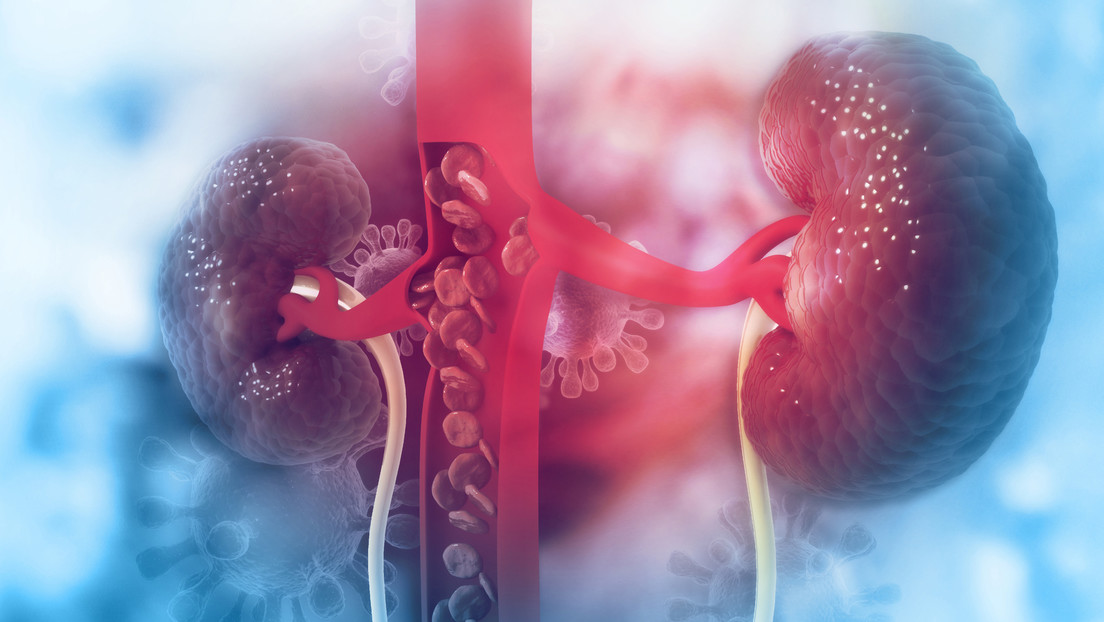Monkeypox is a disease that has become endemic mainly in the jungle regions of Africa, although sporadic outbreaks have been detected in other nations.
According to the WHO, monkeypox is a rare viral zoonosis (a disease caused by viruses transmitted from animals to people) that “continues to appear sporadically in some central and western parts of the African rainforest.
“We have seen confirmed cases outside of Portugal, suspected cases outside of Spain, and we are seeing an expansion of confirmed and suspected cases worldwide,” said Jennifer McQuiston, deputy director of the division of high-consequence pathogens and pathologies at the Centers for Disease Control. and Disease Prevention (CDC). In that sense, the expert assured that, at the moment, “nobody has their arms around this to know how big and expansive it can be.”
This expression was supported by Maria Van Kerkhove, director of the emerging diseases and zoonoses unit in the WHO Health Emergencies Program: “We have identified positive cases in the United Kingdom, Portugal and Spain. And we hope there will be others.”
Virologist Mario Lozano, doctor in Biochemical Sciences and an expert in Molecular Biology, stated: “Ape or monkey pox is a disease caused by the Monkeypox virus. This virus is a relative of the human smallpox virus (variola virus) that was eradicated from Earth in 1980. Although its name points to monkeys, because it was first detected in these animals, its natural host is assumed to be rodents” .
“Monkeypox is a disease caused by a virus similar to smallpox that, obviously, is already established in the world and that is why vaccination against this pathology was stopped in the 1980s,” explained Ricardo Teijeiro (MN 58065). , infectologist at Hospital Pirovano and member of the Argentine Society of Infectious Diseases (SADI). In that sense.
The expert pointed out that, “in general, it occurs in animals, in primates (monkeys), but it is believed that the reservoir is small rodents such as squirrels, from which they are transmitted to the monkey and then to man, since it invades a lot the habitat of these animals”.
The doctor also assured that “there are sporadic outbreaks.” “There were already outbreaks in the United States, around 2003, and now apparently some cases have been detected in England. But in the area where it remains endemic is in Africa: Guinea, Nigeria, Congo and other regions of the continent”, explained Teijeiro.
How is it transmitted and what is the situation in the world
Monkeypox “can be spread to other people, but person-to-person transmission alone cannot easily sustain an outbreak.” “Someone can become infected through direct contact with respiratory droplets from another person who has monkeypox at home or in a health facility, or through contaminated materials such as bedding; but while these are the main modes of person-to-person transmission, monkeypox outbreaks tend to occur in small clusters of a few cases, without leading to widespread community transmission.”
“We’re finding where we’re looking,” Van Kerkhove said, warning: “It’s clearly been going on for a few weeks.” Likewise, the WHO official explained that “the majority of cases have been detected in men who are homosexual, bisexual or are men who have sex with men”, although she clarified that they should not “focus too much on that fact”.
Lozano, meanwhile, added: “In general, contagions occur through close contact with another person’s fluids, especially the liquid that suppurates from the small sores that occur on the skin.” For its part, the international health organization explained that “the monkeypox virus is an orthopoxvirus that causes human monkeypox, a viral disease with symptoms similar to smallpox.”
This disease has a lower risk than the usual smallpox, but it does present with skin manifestations, fever, general malaise and headache. The usual for an infectious disease, described Teijeiro.
So far, as reported by the health authorities of each nation, more than 45 cases have been registered, between confirmed and suspected:
Spain: 23 cases, between suspected and confirmed.
Portugal: 20 suspects, of which 5 were confirmed.
United Kingdom: 9 confirmed cases
United States: 1 confirmed (in the state of Massachusetts)
“This is the first time that transmission through sexual intercourse has been linked, but this novel mode of transmission for this virus still requires confirmation. Until now, this virus is not usually easily transmitted between people, so it is not very contagious,” Lozano explained, adding: “The cases are very few, so the disease does not entail a health risk that should concern the population.”
In any case, the virologist stressed that “it is important that health systems are attentive to any outbreak. Especially now when it is suspected that a new route of contagion has been opened, although I insist… it is not confirmed yet. “In June 2003, the first case of monkeypox was reported in multiple people in a multi-state outbreak in the United States who had had contact with infected prairie dogs and other exotic pets. In other words, the alarm signal of these small outbreaks is the mode of transmission, ‘men who have sex with men’, which previously had not been registered for this form of transmission”, added Darío Álvarez, biochemist and specialist in virology (MN 10659 ),
The international health organization also assured that “someone can become infected through direct contact with respiratory droplets from another person who has monkeypox at home or in a health center, or with contaminated materials such as bedding”, although it clarified that “monkeypox outbreaks tend to occur in small groups of a few cases without leading to widespread community transmission”, for which they warned that “outbreaks can be easily controlled when responding quickly”.
“The authorities in the United Kingdom suspect that there may be community transmission and they fear that the virus is being distributed among asymptomatic individuals, but that scenario is not yet real either. It is only a prevention ”, clarified Lozano.
Michael Ryan, executive director of the WHO Health Emergencies Programme, referring to the recent outbreak, said: “We are seeing a change in the age distribution of cases. We are seeing a change in the geographic distribution of cases. We have to really understand that deep ecology. We have to really understand human behavior in those regions and we have to try to prevent the disease from reaching humans in the first place.”
Against this global backdrop, Van Kerkhove said: “What we need to do right now is focus on stopping the spread. And we can do that. We can do that with the right messages, with the right tests… with supportive isolation and clinical care as needed, protecting healthcare workers.”
what are the symptoms
The WHO warns that, after an incubation period of between 6 and 16 days (which can vary between 5 and 21), the infection is divided into two periods:
– Invasion (between days 0 and 5): characterized by fever, severe headache, lymphadenopathy (swollen lymph nodes), low back pain, myalgia (muscle pain) and severe asthenia (lack of energy)
– Skin rash (between 1 and 3 days after the onset of fever): different phases of the rash appear. In general, it first affects the face and then spreads to the rest of the body, with the most affected body regions being the face (in 95% of cases), the palms of the hands and the soles of the feet (in 75% of cases). The evolution of this kind of blister progresses to maculopapular (flat-based lesions) to vesicles (fluid-filled blisters), pustules and crusts (after about 10 days), which disappear completely up to 3 weeks later.
Meanwhile, the location and severity of injuries vary from person to person. The affected areas are: mucous membranes of the mouth (70% of cases), the genitals (30%), the palpebral conjunctiva (20%) and the cornea (eyeball). In any case, monkeypox is usually a self-limited disease with symptoms that last from 14 to 21 days, with severe cases occurring more frequently among children and their evolution depending on the degree of exposure to the virus, the state of health of the patient and the severity of the complications, detailed the WHO.
In addition, Álvarez explained to Infobae that “the signs and symptoms are similar to those of common smallpox, although milder, where patients present fever, respiratory symptoms and a vesicular rash similar to smallpox, with the difference that in smallpox mono lymphadenopathy (enlarged lymph nodes) are larger in the early stages.
“It is important that we understand that we should not be frightened by the appearance of these viruses, they constantly appear of several different types and they appeared many decades ago as well, what happens is that we only detect what we are looking for… and now they are being searched for more actively”, Lozano pointed out. Who also stated: “The problem in Africa is several magnitudes larger and has been going on for a long time. However, it is also important that we are alert to prevent a new condition from spreading in our territory and that we can quickly stop an outbreak as soon as it starts.”
And by way of example, the virologist highlighted:
Smallpox was a very serious disease that caused several pandemics and millions of deaths and had a crucial impact on the defeat of the Aztec and Inca empires by Cortes and Pizarro, respectively.
Monkeypox is a less serious disease. It produces thousands of infections in Africa every year, with a mortality between 1% and, in some cases, 10%”. Being that the international organization assured that the majority of deaths occur in young children and, in general, the younger age groups seem to be more susceptible to monkeypox.
“Cases have occasionally been detected outside of Africa, generally with outbreaks that affected dozens of people, as in this case, and related to the trafficking of exotic animals,” Lozano explained. Meanwhile, Teijeiro added: “Monkeypox does not have a specific treatment and the risks of contracting it will always be as long as humans invade the animals’ habitat,” Teijeiro explained.
Finally, both the infectologist assured that “there was no case in Argentina, until now”; while the virologist added: “There have been no cases in Argentina yet, but we cannot rule out that the disease arrives because it is spreading in several countries with which we have close contacts.”
While Álvarez concluded: “Immunization with the smallpox vaccine prevents the disease and avoids the massive dissemination of the infection (the mortality of smallpox infection is usually 30% in non-immune patients), in addition the vaccine protects or reduces the clinical manifestations of monkeypox.





